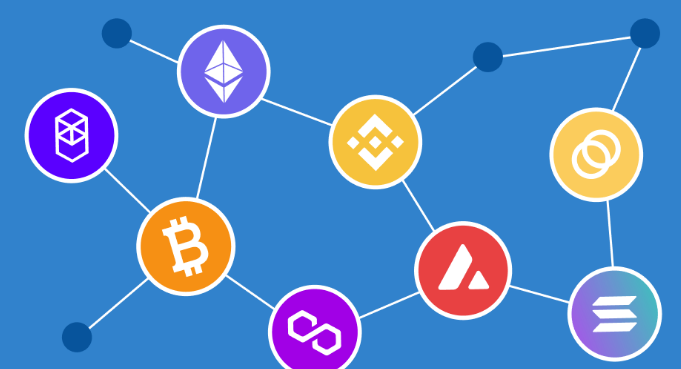How to Develop a Cross-Chain Cryptocurrency System
As blockchain technology evolves, interoperability between different networks has become essential. A cross-chain cryptocurrency system enables seamless asset transfers and smart contract interactions across multiple blockchains. This capability enhances liquidity, expands user adoption, and improves the overall efficiency of decentralized applications (dApps).
In this guide, we will explore the key components, development strategies, and security considerations for building a cross-chain cryptocurrency system.
1. Understanding Cross-Chain Technology
What is a Cross-Chain Cryptocurrency System?
A cross-chain system allows digital assets, data, and smart contracts to interact across different blockchain networks without centralized intermediaries. It enables users to transfer tokens or execute transactions between chains like Ethereum, Binance Smart Chain (BSC), Solana, and Avalanche seamlessly.
Why is Cross-Chain Development Important?
- Interoperability: Users can move assets across different blockchain ecosystems.
- Scalability: Offloading transactions to different chains reduces congestion on popular networks.
- Lower Costs: Enables users to avoid high gas fees by leveraging lower-cost blockchains.
- Enhanced Liquidity: Expands token usability by making assets accessible across multiple chains.
- Better User Experience: Users are not restricted to a single blockchain network.
2. Key Components of a Cross-Chain Cryptocurrency System
A successful cross-chain system relies on various technologies and protocols. Below are the core components:
a) Cross-Chain Bridges
Bridges facilitate asset transfers between different blockchains. They work by locking tokens on one blockchain and minting equivalent tokens on another.
Types of Cross-Chain Bridges:
- Lock & Mint: A smart contract locks assets on the source chain and mints equivalent tokens on the destination chain.
- Burn & Mint: Tokens on the source chain are burned, and new tokens are minted on the target chain.
- Liquidity Pools: Bridges use liquidity pools to enable token swaps across chains.
Popular Cross-Chain Bridges:
- Multichain (formerly Anyswap) – Supports multiple blockchains.
- Wormhole – Facilitates transfers between Solana, Ethereum, BSC, and more.
- Polygon Bridge – Connects Ethereum with the Polygon network.
b) Smart Contracts for Cross-Chain Transactions
Smart contracts automate asset transfers and enforce security. Each blockchain must have a compatible contract to handle cross-chain transactions.
Tools for Smart Contract Development:
- Solidity (Ethereum, BSC, Avalanche)
- Rust (Solana, NEAR)
- Move (Aptos, Sui)
c) Oracles for Cross-Chain Communication
Oracles are needed to verify and relay transaction data between chains.
Popular Blockchain Oracles:
- Chainlink CCIP – Enables secure cross-chain communication.
- Band Protocol – Decentralized data oracle for smart contracts.
- Pyth Network – Provides low-latency financial data for cross-chain applications.
d) Atomic Swaps
Atomic swaps allow peer-to-peer exchanges of assets across blockchains without intermediaries. They use Hashed Time-Locked Contracts (HTLCs) to ensure security.
Popular Atomic Swap Protocols:
- Liquality – A cross-chain wallet that enables trustless swaps.
- Komodo AtomicDEX – Facilitates atomic swaps between different blockchains.
e) Cross-Chain Messaging Protocols
Messaging protocols facilitate secure communication between smart contracts on different blockchains.
Leading Cross-Chain Messaging Solutions:
- LayerZero – An omnichain interoperability protocol.
- Axelar – Secure cross-chain communication and execution.
- Polkadot XCM – Connects parachains in the Polkadot ecosystem.
3. Steps to Develop a Cross-Chain Cryptocurrency System
Step 1: Define Your Cross-Chain Architecture
Decide on the structure of your cross-chain system. Options include:
- Bridge-Based Model: Uses smart contracts to lock and mint assets.
- Liquidity Pool Model: Users deposit tokens into liquidity pools for cross-chain swaps.
- Sidechain Model: A dedicated blockchain (sidechain) is built to facilitate asset transfers.
Step 2: Choose Compatible Blockchains
Select the blockchains your system will support. Factors to consider:
- Transaction Speed (e.g., Solana is faster than Ethereum).
- Gas Fees (e.g., BSC has lower fees than Ethereum).
- Smart Contract Capabilities (Ethereum has the most extensive DeFi ecosystem).
Step 3: Develop Smart Contracts for Each Blockchain
Create and deploy smart contracts that manage asset transfers and transactions.
Smart Contract Development Checklist:
✅ Implement cross-chain token locking & minting mechanisms.
✅ Ensure compatibility with different blockchain virtual machines (EVM, WASM, Move).
✅ Include security measures (reentrancy protection, access control).
Step 4: Implement Cross-Chain Communication
Integrate messaging protocols and oracles to relay data between chains.
✅ Use Chainlink CCIP or LayerZero for secure message passing.
✅ Validate transactions with decentralized oracles.
Step 5: Build a Cross-Chain Wallet or dApp
Develop a user-friendly interface for managing cross-chain transactions.
Tools for dApp Development:
- React.js (frontend framework)
- Web3.js / Ethers.js (Ethereum interactions)
- Phantom / MetaMask SDK (Wallet integration)
Step 6: Test and Audit the System
Thorough security testing is crucial to prevent exploits.
✅ Unit Testing: Test smart contract functions using Hardhat or Truffle.
✅ Penetration Testing: Simulate attacks to find vulnerabilities.
✅ Gas Optimization: Reduce transaction costs for efficiency.
✅ Third-Party Audit: Engage security firms like CertiK or OpenZeppelin.
Step 7: Deploy & Monitor the System
Once testing is complete, deploy the system on mainnet and continuously monitor it.
✅ Set up real-time monitoring with Chainalysis or Forta.
✅ Run a bug bounty program to encourage ethical hacking.
✅ Continuously update smart contracts to patch vulnerabilities.
4. Security Best Practices for Cross-Chain Systems
Developing a secure cross-chain system requires robust security measures:
🔹 Use Multi-Signature Wallets: Prevent unauthorized transactions with multi-sig governance.
🔹 Implement Rate Limits: Restrict large transfers to prevent bridge exploits.
🔹 Perform Regular Audits: Ensure smart contract integrity with third-party audits.
🔹 Monitor Blockchain Activity: Detect suspicious behavior using analytics tools.
🔹 Educate Users: Prevent phishing and private key leaks through security awareness.
5. Future Trends in Cross-Chain Cryptocurrency Development
🚀 Zero-Knowledge Proofs (ZKPs): Enhance privacy and security in cross-chain transactions.
🚀 AI-Driven Security: AI tools will help detect vulnerabilities in real time.
🚀 Decentralized Identity (DID): Identity verification across multiple chains.
🚀 Interoperable DeFi Protocols: Seamless lending, staking, and yield farming across chains.
Conclusion
Developing a cross-chain cryptocurrency system requires a combination of bridges, smart contracts, oracles, and atomic swaps to enable seamless interoperability. By choosing the right architecture, implementing secure cross-chain messaging, and following rigorous security practices, developers can create a scalable and secure cross-chain ecosystem.
As the blockchain space evolves, cross-chain solutions will play a vital role in the future of DeFi, NFTs, and Web3 applications, making them a crucial innovation for the crypto industry.

Also Read :
